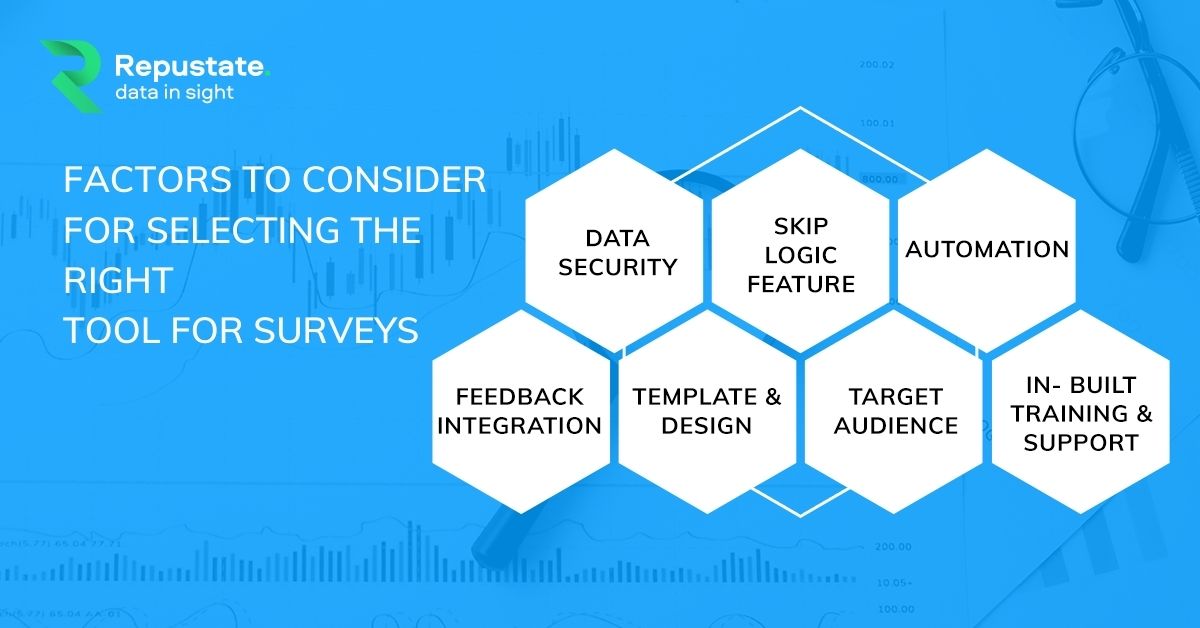Top 5 Survey Software for Voice of the Customer and Voice of the Employee
Giving a voice to customers and employees begins with asking the right questions. An ideal survey should ensure that true opinions come through. That’s why questionnaires must have open-ended questions so that respondents freely express their opinions. However, in such cases where there are no predetermined categorization of answers, how do you know the exact sentiment scores? How in-depth is the text analytics while conducting survey data analysis? How do you choose the right survey software? These are the interesting aspects of survey analysis that this article discusses.
How do you do survey data analysis?
Survey analysis begins with first zeroing in on what exactly your objective is. For example, is it to measure customer satisfaction with your product, or is it to gauge if the pricing is optimal? Only when your objective is established does everything else fall into place. You can then analyze Voice of the Customer data to get insights, and thereafter formulate actionable measures based on them. The whole process can be broadly divided into the following steps:
-
Step 1: Identify your goals. Then identify subsets you will do the comparative analysis with. For example, you might want subsets based on age groups (children, adults, elderly) when you create a survey to find out how customers experienced their stay at your resort.
-
Step 2: Create your questionnaire. Ensure that you ask all the right questions in your survey, including the reason behind a response. This means, having open-ended questions to dig a little deeper.
-
Step 3: Gather your information securely. Store all your experience data in a single recording system for every customer touch-point across the business.
-
Step 4: Process the captured data. Do comparative analysis with existing data and benchmarks. Apply text analytics and sentiment analysis on your gathered dataset and understand the patterns and trends that emerge on your customer insights dashboard.
-
Step 5: Alert and assign tasks to the right teams. Develop business strategies accordingly, both long-term and immediate, based on the insights from the survey data analysis.
Why do we need sentiment mining for survey analysis?
Market research and customer satisfaction surveys are a great way to measure customer awareness. One of the biggest challenges in survey data analysis though, is handling open-ended responses where there are no categorized, predetermined answers. It is in such cases that sentiment analysis is tremendously useful. With sentiment analysis, one can know the exact opinion a customer has, even though they may use conversational language.
To illustrate this, let’s look at a response to an open-ended question - “Yes, I like to shop here. The return policy is hassle-free and the styles are exactly my type. But why are there no samples in the premium beauty products section?” In an answer like this, it is clear that the customer likes the brand in general and is happy with their service. However, they ask a question that implies dissatisfaction, even though they don’t use any negative words like “bad”, “rude”, or “inconvenient”. When scrutinized through a frame of context, the last sentence implies that they are unhappy that the shop does not give them samples of premium products like other shops do. It is, in fact, a negative sentiment expressed for this aspect of the business. Now, this is an actionable insight that the business can address.
Equipped with natural language processing techniques and through named entity recognition, a sentiment analysis model can dissect such complex responses as granularly as possible for each aspect of a product or service. When collected at scale, such responses are a goldmine for strategic product and service improvements.

How do you choose the right tool for surveys?
The right survey tool should offer data security, customization, integration with CRM systems such as SalesForce, Hubspot, etc., helpful client onboarding, and other such important aspects. Here are highlights of some key features:
-
Data Security: Data security is paramount in any survey, especially in verticals like healthcare or finance, where data can contain confidential information. You must choose a survey tool that values discretion and data safety.
-
Skip Logic: Skip logic is a feature that shows a follow-up question based on the answer the respondent provides. Such a question will not be visible unless the person answers the query as determined by the survey. In this way, the survey seems less daunting, and more appealing to participants.
-
Automatic periodic surveys: A great value-add that a good survey tool brings is the ability to send surveys automatically at various times throughout the customer journey, without manual intervention.
-
Feedback integration: The right tool for survey data analysis should be able to integrate feedback into your web and mobile apps automatically and seamlessly.
-
Template & Design: Another key feature is a customizable repository of email templates that can fit your business needs. This makes it easy to create different designs for different target audiences.
-
Target audience: It should be capable of handling multiple respondents and capture feedback based on different parameters like demography, geography, age, and behaviors.
-
Training & Support: The right survey analysis tool needs to have excellent training and support for the onboarding of clients. It should also have useful resources like self-help blogs, FAQs, and best-practice guides.
Top 5 Survey Software for Voice of the Customer and Voice of the Employee:
Operationally it is important to find the right survey software to make the creation and broadcast of the surveys as fast and easy as possible. Here are the top five survey software in terms of scalability, features, and technology.
Arguably, the leading survey software out there, Survey Monkey handles 20 million questions daily. You can create and send surveys through its secure survey platform, and merge survey insights into your business and customer relationship management (CRM) apps through built-in integration and plug-in features. Survey Monkey offers a very wide range of survey plans based on industry verticals. They are:
-
Customer satisfaction surveys
-
Healthcare surveys (also has HIPAA-compliant features)
-
Market research surveys
-
Promoter Score (know if your customer will recommend you)
-
Academic and research surveys
-
Employee satisfaction surveys
-
Marketing surveys
-
Event planning surveys
-
Non-profit & volunteer surveys
-
Student surveys, educators surveys, school surveys
You can also access expert-written sample questions to include in your surveys. You also have the flexibility to score your surveys to estimate their success rates with another of their services called SurveyMonkey Genius.
Qualtrics helps you conduct surveys based on market segmentation for product, ad testing, consumer sentiment, brand tracking, and much more. A comprehensive research platform, it is used by more than 13,000 brands. You can gather customer feedback throughout your new product development phase, which includes optimal pricing, product feature likeability, and such. Its business operating system allows you to capitalize on key business differentiators and identify any gaps thereof in products and services. Key survey analysis offerings include:
-
Market segmentation
-
Product development & pricing
-
Competitive benchmarking
-
Academic research
-
Purchase behavior
-
Market trends
-
Conjoint analysis
-
A/B testing
-
Ad testing
-
Website & mobile optimization
-
Panel management
-
Respondents on demand
The training and support provided are truly comprehensive. One of their unique offerings is the Qualtrics Master Sessions, a webinar series where global experts who have designed some of the most impactful experiences for some of the most well-known brands, share their insights.
One of the most popular survey data analysis software is the Google Surveys solution. It offers a cost-effective way to collect and understand business insights, compared to traditional market research methodologies. It allows you to conduct a survey on all your audience lists in Analytics, Search Ads 360, Google Ads, and YouTube. You can custom-design your surveys and understand your data through simple in-built graphs and charts. It caters to both mid-sized companies who want ad hoc surveys and large companies that need more specialized targeting. Offerings include:
Survey 360 for larger enterprises
-
Representative sample
-
Demographic targeting by gender, age, and geography
-
Screening questions that enable targeted marketing
-
Remarketing audience targeting
-
User and account administration
-
Services, support, and SLAs provided by Google and global partner network
Surveys for mid-sized companies
-
Ad hoc surveys
-
Representative sample
-
Demographic targeting by gender, age, and geography
-
Customized targeting with screening questions
-
Help centre and email
-
Pay as you go model
With an easy-to-use platform and simple sharing features, any team in an organization can use a survey for any purpose. The results can be seen in a user-friendly dashboard within hours of receiving the survey data.
With GetFeedback, you have an easy-to-use online survey solution to gather and measure the Voice of the Customer. You can easily integrate it with your Salesforce customer data to get a holistic view of your customer experience. You can personalize your surveys with unique customer details from Salesforce and send the questionnaire through the channel you want, whether it’s email, chat, or SMS. Mobile friendly, and featuring beautiful design templates, the tool is used by more than 1, 700 companies. Key features include:
-
Seamless integration with Salesforce for survey-triggering
-
Real-time feedback on mobile apps and websites
-
Integration into your website, web and mobile apps
-
Targeted feedback based on demographics and age
-
Capture and unify feedback across all key engagement channels
-
Automatic periodic survey and feedback throughout the customer journey
The software allows you to automate tasks for critical feedback. You can also set up workflows and alerts based on job roles so that the right teams are notified of an action item.
BlueX from Explorance offers a 360-degree feedback mechanism for enterprise, Voice of the Employee, and academic experience programs. It is customizable and has pre-built templates that you can use to create simple or complex survey data analysis modules. Easy to integrate, you can leverage your existing source data such as Excel, CSV, and through APl, when sending out surveys. You can also connect with your other systems for single sign-on (SSO) access to unify the experience for other survey creators.
Additionally, it has latest accessibility standards for WCAG 2.1 (AA) and Section 508. You can design on your desktop and BlueX will automatically render the design to mobile, tablet, screen reader, and other devices. Feature include:
-
360-degree feedback
-
Course evaluations
-
Live formative feedback
-
Student surveys
-
Stepwise feedback
-
Continuous listening
-
Employee engagement
-
Learning measurement
Blue Ex is used and endorsed by the University of Louisville, National Bank of Canada, University of Toronto, NASA, and the University of Michigan, amongst others.
Optimize your surveys for business intelligence
Not every answer in a survey is a “yes”, “no”, or “maybe”. Open-ended questions mean that customers use colloquial language. Moreover, sometimes answers can be expressed in the same manner for two entirely different questions. For example, the response “Better menu selection” can be an answer to a question that asks “What do you like about the restaurant” that denotes a positive sentiment. But it can also be in response to the question, “What can be improved about the restaurant?, which denotes a negative sentiment. Watch this video to get a better understanding of this issue.
Without a frame of reference, your survey analysis tool may not be able to differentiate between negative and positive sentiments expressed in responses. This is why, along with the rich and diverse data collected through surveys, you also need an intelligent sentiment analysis solution to understand nuances in response to unearth accurate insights and sentiment scores. Only then can you gain clear and reliable information for competitive analysis, brand insights, and business intelligence.
 Home
Home
 Apr 19, 2021
Apr 19, 2021

 Jeremy Wemple
Jeremy Wemple
 Dr. Ayman Abdelazem
Dr. Ayman Abdelazem
 Dr. Salah Alnajem, PhD
Dr. Salah Alnajem, PhD
 David Allen
David Allen

 Repustate Team
Repustate Team

